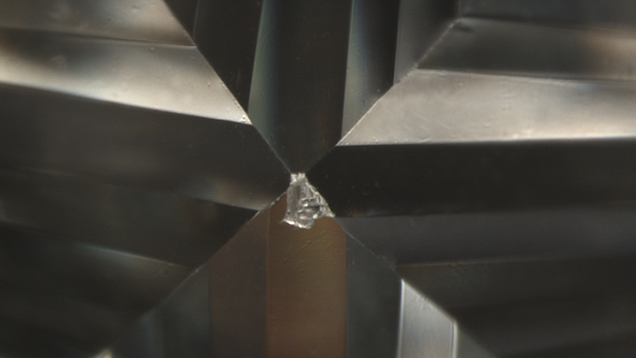Diamond durability refers to a diamond’s ability to withstand wear, scratching, chipping, and breaking over time. As the hardest naturally occurring substance on Earth, diamonds are renowned for their exceptional hardness, but their overall durability depends on several other factors as well. These factors include their toughness (resistance to breaking or fracturing), clarity (internal inclusions or flaws), and how they are handled or set in jewelry.
Key Factors Affecting Diamond Durability:
Hardness:
Hardness is the measure of a material’s resistance to scratching. On the Mohs scale of hardness, diamonds score a 10, the highest possible rating, which means they can only be scratched by other diamonds.
This makes diamonds extremely resilient to surface damage from everyday wear, such as scratches from other materials like metals or other gemstones.
Toughness:
Toughness refers to a material’s ability to resist fracturing or chipping when subjected to impacts. While diamonds are incredibly hard, they are not necessarily tough.
Diamonds have what is called cleavage, which means they have planes of weakness within their crystal structure. If struck with enough force along one of these planes, a diamond can chip, crack, or even break. This makes diamonds more susceptible to damage if not properly protected, especially from sharp impacts.
Clarity and Internal Inclusions:
Diamonds that have significant inclusions (internal flaws) or cracks are more prone to damage. Inclusions can weaken a diamond and make it more susceptible to chipping or breaking under pressure.
High-quality diamonds with fewer inclusions tend to have better durability since there are fewer internal flaws that could potentially lead to cracks or fractures.
Cut:
The cut of the diamond also plays a role in its durability. For instance, a diamond with sharp corners (like in a princess cut or emerald cut) is more likely to experience damage if exposed to forceful impacts compared to a diamond with rounded edges, such as in a round brilliant cut.
The way a diamond is set in jewelry can also affect its durability. For example, a diamond set in a prong setting might be more exposed to risks than one set in a bezel setting, where the diamond is surrounded by metal.
Size and Shape:
Larger diamonds, particularly those with thin or pointed areas (like the corners of a princess cut), may be more vulnerable to chipping than smaller diamonds or those with rounder shapes. The girdle (the outer edge of the diamond) can also be a point of weakness if it’s too thin or if it’s exposed to rough handling.
Environmental Exposure:
While diamonds are highly resistant to heat and most chemicals, they can be affected by extreme temperature fluctuations or harsh chemicals. For example, diamonds can fracture if subjected to rapid, extreme temperature changes (such as a sudden drop from a high heat environment to a cold one).
Chlorine bleach and other harsh chemicals can also affect a diamond, especially if the diamond has any inclusions or flaws.
Practical Considerations for Maintaining Diamond Durability:
Setting:
A secure and protective setting is crucial for diamond durability. For example, in a bezel setting, the diamond is surrounded by metal, which offers extra protection from impacts compared to a prong setting where the diamond is more exposed.
Cleaning and Care:
Regular cleaning with warm, soapy water and a soft brush will help maintain the diamond’s appearance and remove dirt, oils, or other materials that might accumulate over time.
Avoid exposing diamonds to harsh chemicals, including household cleaning products or chlorine, as these can cause damage to the diamond’s surface and any metal settings.
Avoid Hard Impacts:
Although diamonds are hard, they can still chip or break if struck with enough force along their cleavage planes. It’s advisable to remove diamond jewelry before engaging in activities where the diamond could be exposed to sudden impacts (e.g., heavy lifting or sports).
